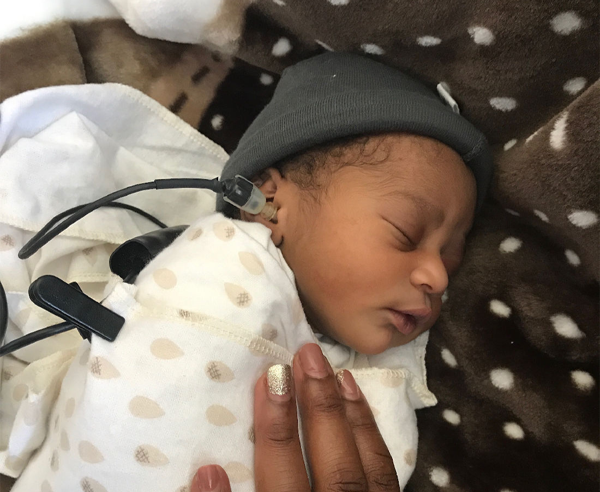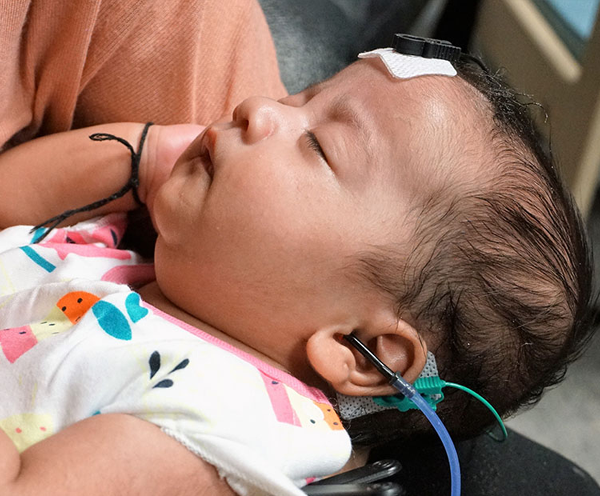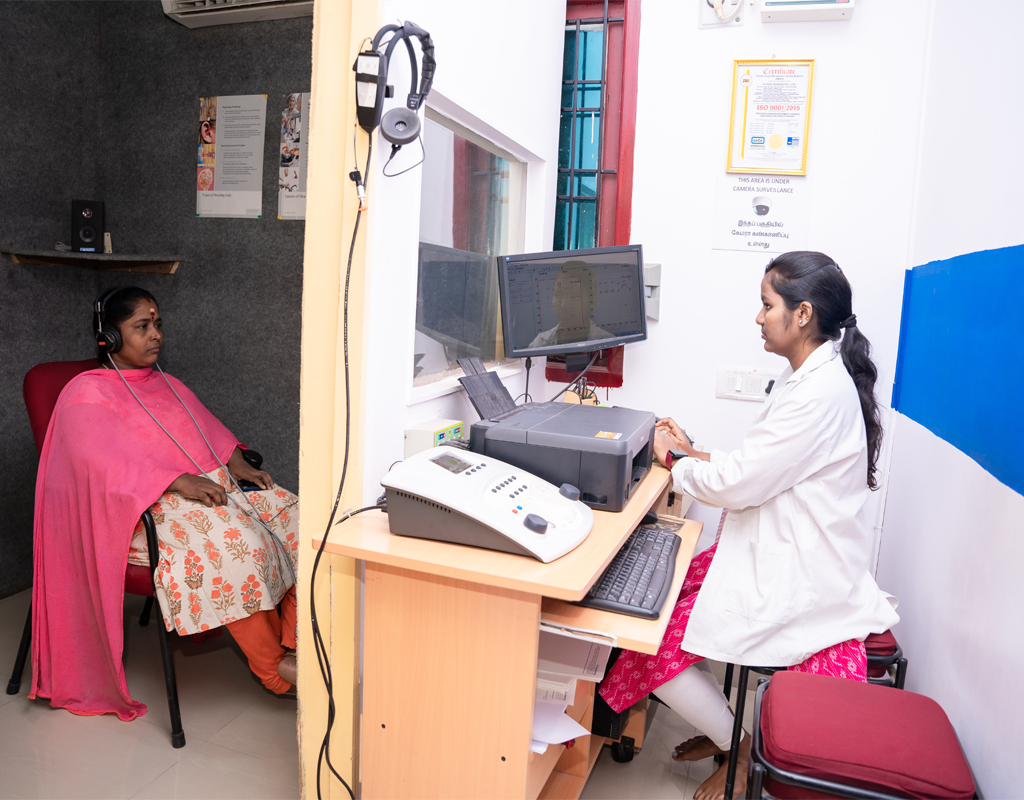Understanding Hearing Health Across All Ages
-
Hearing Tests for Newborns and Young Children
Early Detection for Optimal Development


Otoacoustic Emissions (OAE)
A non-invasive test used to detect hearing defects in newborns and young children who cannot participate in conventional tests. This screening tool evaluates click-evoked otoacoustic emissions and helps differentiate between cochlear and higher-level hearing losses.
Brainstem Evoked Response Audiometry (BERA)
Also known as Auditory Brainstem Response (ABR), this test measures the hearing nerve’s response to sound. It’s commonly used if a newborn fails initial hospital screenings or if there’s a suspicion of hearing loss that other tests haven’t confirmed. The test is safe, painless, and typically conducted while the child is sleeping or sedated.
-
Hearing Tests for Adults
Assessing Age-Related and Other Hearing Loss

Pure Tone Audiometry (PTA)
The primary test used to determine an individual’s hearing thresholds, identifying the degree, type, and configuration of hearing loss. Essential for diagnosing and managing hearing impairments.
Tympanometry
This test assesses eardrum movement and middle ear function. It helps diagnose issues like ear infections or other middle ear problems by measuring how the eardrum responds to changes in air pressure and sound.
-
Hearing Tests for Elderly
Addressing Age-Related Hearing Loss
Signs of Hearing Loss:
Difficulty hearing over the phone
Trouble following conversations with multiple speakers
Frequently turning up the TV volume
Difficulty hearing in noisy environments
Trouble understanding voices of women and children
Pure tone audiometry (PTA)
-
Hearing Tests for Adults with Ear Problems
Specialised Assessments for Complex Conditions
Meniere’s Disease Testing
Electrocochleography (ECochG)
- Records electrical potentials from the inner ear and auditory nerve, aiding in the diagnosis and monitoring of Meniere’s disease and endolymphatic hydrops.
Vertigo Testing
Vertigo, often caused by inner ear disorders, can significantly affect balance and quality of life. At Hi Tone Hearing, we provide comprehensive vertigo evaluations to diagnose these conditions.
- Vestibular Evoked Myogenic Potentials (VEMP)
- VEMP testing is used to evaluate the function of the otolithic organs in the inner ear, which play a key role in balance. This non-invasive test helps in diagnosing conditions like Meniere’s disease and other vestibular disorders that can cause vertigo. By assessing the vestibular system’s response to sound, VEMP provides crucial information for managing balance-related issues.
- Vestibular Evoked Myogenic Potentials (VEMP)
-
Tinnitus Management
Finding Relief from Persistent Ear Noises
Tinnitus Maskers
Wearable Maskers
- Behind-the-Ear Maskers: Discreet devices worn behind the ear that emit soothing sounds to mask tinnitus. These are similar in appearance to hearing aids and are adjustable to fit individual preferences.
- In-the-Ear Maskers: Compact devices placed inside the ear canal that offer a more direct masking effect. These are ideal for individuals who prefer a less noticeable option.
Environmental Maskers
- Non-Wearable Options: Include devices like noisy fans, under-pillow speakers, televisions, or cassette players. These can be used in various settings to create a background noise that helps mask tinnitus sounds.
Hearing Aids
Enhanced Sound Perception
By amplifying external sounds, hearing aids can reduce the prominence of tinnitus, making it less noticeable.
Tinnitus Masking Features
Many hearing aids include built-in tinnitus masking or sound therapy programs that generate white noise or soothing sounds, helping to diminish tinnitus symptoms.
Tinnitus Retraining Therapy (TRT)
Sound Therapy
- Broad-Band Noise: Uses low-level, broad-band noise to reduce the contrast between tinnitus and external sounds. This noise is often delivered through hearing aids or dedicated sound generators.
- Customised Sounds: May include tailored sounds to fit individual tinnitus profiles and preferences.
Counselling
- Education and Support: Provides patients with a better understanding of tinnitus and strategies to manage their response to it. This helps in reducing anxiety and improving coping mechanisms.
- Habituation Techniques: Helps patients to reframe their perception of tinnitus, focusing on ways to minimise its impact on daily life and reduce its emotional burden.
-
Industrial Hearing Screening
Protecting Your Workforce’s Hearing Health
On-Site Pure Tone Audiogram
Pre-Employment Hearing Check
Why Industrial Hearing Screening is Essential
Early Detection: Identify hearing loss at an early stage to prevent further deterioration.
Compliance: Meet regulatory requirements for occupational health and safety.
Employee Well-Being: Protect your employees from the risks associated with prolonged exposure to high noise levels.
Cost-Effective: Reduce long-term costs associated with hearing loss by implementing preventative measures.

